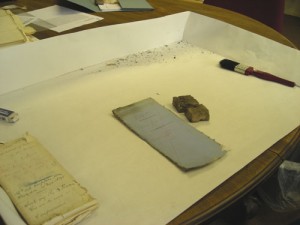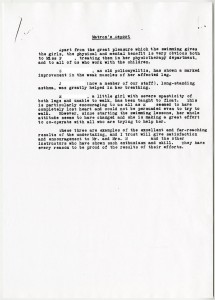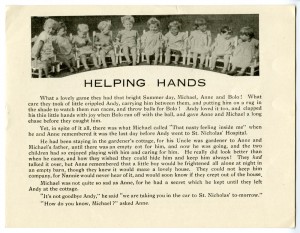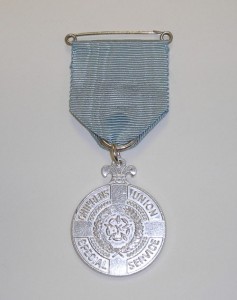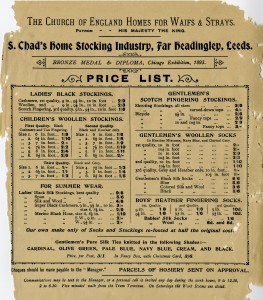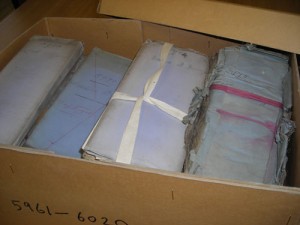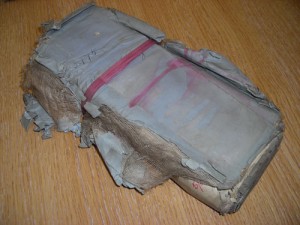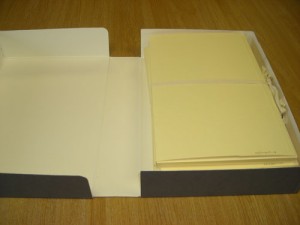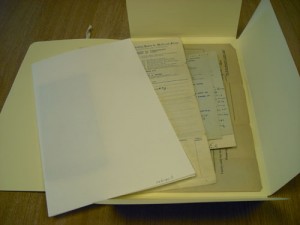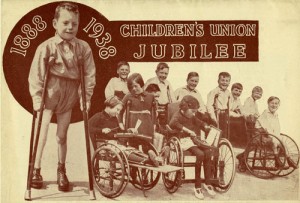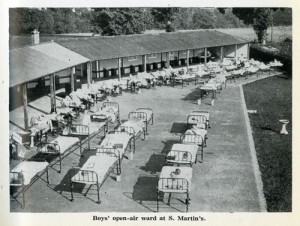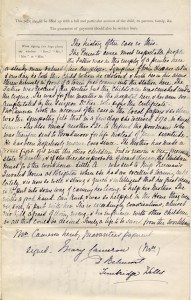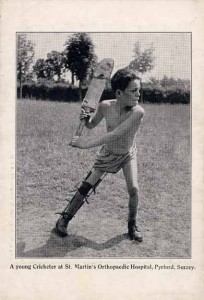Previously, I talked about how our case files relating to disabled children are being repackaged by a team of volunteers. Today, I thought I’d let our volunteers explain what it’s been like to help with this project.
Here, one of our volunteers describes the repackaging process:
“Firstly I remove the items from the blue folders which they have been stored in. Once the papers have been removed, I clean each item with a sponge and I place them under weights in order to flatten them as much as possible. I label each item with a unique number to make them more accessible. Once they have been left under weights for a few hours, I place them into archive quality folders and then the folders into boxes.”
The photo below shows one of the case files in the process of being cleaned with chemical sponges.
I asked the volunteers what the most difficult part of the repackaging process was, and the response was unanimous. In the words of one volunteer:
“The most challenging part of working with the case files must be to clean and flatten some of the documents which are very fragile and in poor condition.”
In the words of another volunteer:
“Although not common, some files – especially if the covering jacket is missing or torn – can be very dirty and fragile. Regrettably, as it’s typically the initial document in the case file, it is the originating application form which takes the brunt of the damage.”
Thankfully, not all the case files are so badly damaged, but it just goes to show how valuable the repackaging process is. Placing the files into archival folders protects the documents from all sides, which prevents them from sustaining further damage.
When it comes to what the volunteers enjoy most about the project, the answers varied. Some of the volunteers said they value the practical experience they are able to gain when it comes to cleaning and handling the historical documents, and some volunteers said they particularly enjoy the atmosphere in the office. For most of the volunteers, though, it is the stories found in the case files that are the really interesting part.
“[I enjoy the] sense of being only one step removed from decisions and actions that have such a pivotal bearing on the life chances of children who would otherwise face a life of poverty, suffering and deprivation. Occasionally, you come across letters written by the children themselves – sometimes well into their adulthood many years after they have left the care of The Children’s Society. As well as bringing the files ‘to life’, as it were, such documents are evidence of the education and support that The Society has provided for individuals who might otherwise have faced lives of poverty and neglect.”
I would like to thank all our volunteers for taking the time to answer my questions and for helping to preserve our case files for the future!

